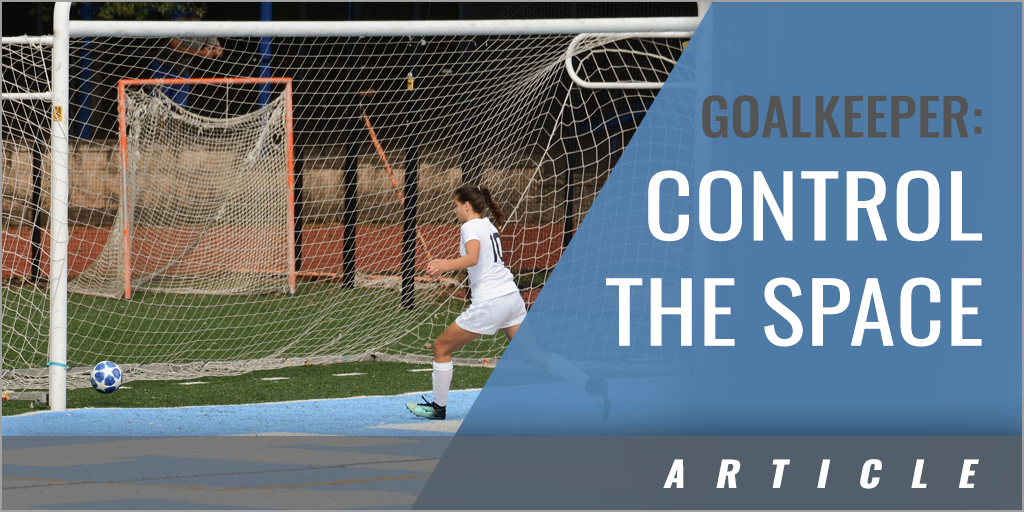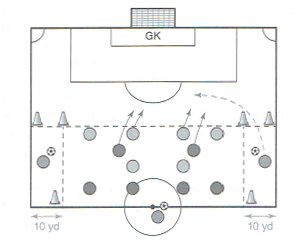|
By: Tony DiCicco Originally Published in: Attacking Soccer Provided by: Human Kinetics
Purpose Improving the goalkeeper's ability to organize and control the space behind the defense Organization Set up a half-field area. The exercise starts in an area 35 yards (32 m) from goal to the midfield line. Mark two service areas that are 10 yards (9 m) wide on each flank plus a central service area just over midfield. There are six players on each team in the central area. There is a neutral player in each of the three service areas. The keeper is in the goal area. Procedure
Key Points
Variations
|







